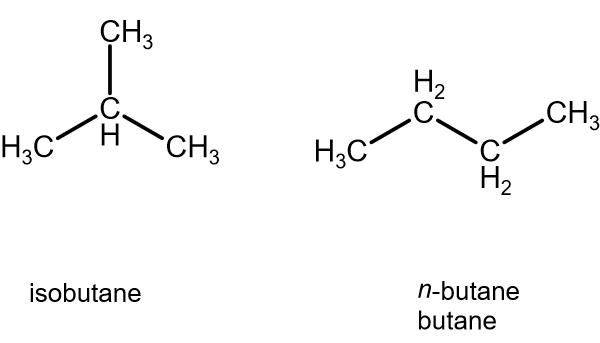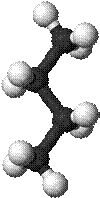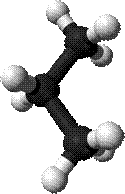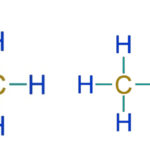Liquefied Petroleum Gas
· Discover the real difference between butane vs propane vs isobutane vs LPG. All three gases are consider to be LPG – Liquefied Petroleum Gas.
· In some ways they are almost or exactly the same.
· However, there are some important differences that you need to know.
First, some short summary answers:
Butane vs Propane – Choosing Butane or Propane Gas
· Comparing butane vs propane, the most important differences are their dissimilar boiling point and vapour pressure but both are regarded as LPG – Liquefied Petroleum Gas – and commonly used for cooking, heating, hot water and autogas.
· When considering butane or propane gas, the difference in physical properties determines which gas is best for a particular application.
· Propane has a lower boiling point, at -42°C vs -0.4°C for butane. So, propane will continue to vaporise – turn to gas – even in colder climates, down to -42°C.
· Butane has a lower vapour pressure at a given temperature, being about ¼ that of propane. This lower pressure is advantageous for some propellant applications.
· Butane has a slightly higher energy content by volume while propane energy content is slightly higher by weight. This seeming inconsistency is as a result of the two liquefied gases having a different specific gravity.
What is Butane (n-butane)? Is Butane a Gas?
Ø Butane is a gas when not under pressure and at normal room temperatures. Butane is a flammable hydrocarbon gas that is liquefied through pressurisation. Butane is a gas that also falls under the category of “LPG”. It is classified as LPG, along with propane, isobutane and mixtures of these gases.
Ø Butane (n-butane) comes from natural gas processing and oil refining.
Ø Butane is commonly used as a fuel, propellant and refrigerant, as well as a petrochemical feedstock.
Ø The chemical formula for Butane is C4H10. (Butane molecule model shown)
Ø Butane is supplied to businesses that require Butane, as opposed to propane.
Ø Butane has some specific applications where it has advantages over propane.
n-Butane or n Butane
Both n-Butane or n Butane are just other names for regular butane.
What is Isobutane?
ü Isobutane (i-butane) is an isomer of butane.
ü So, it has the same chemical formula as butane — C4H10 — but has a different arrangement of its atoms, as you can see in the 3-D model images. (Isobutane molecule model shown)
ü As with normal butane, isobutane is a flammable hydrocarbon gas that is liquefied through pressurisation.
ü Isobutane is converted from butane in a process called isomerization.
ü It also has different physical properties from normal butane (n-butane).
ü In addition to being used as a fuel, isobutane is commonly used as a refrigerant and a propellant.
ü Isobutane has very low global warming potential and insignificant ozone depletion potential.
ü However, its main use is in refineries to increase octane of gasoline and make it cleaner burning.
ü It is classified as LPG, along with propane, butane and mixes of these gases.
i-Butane, i Butane or Methylpropane
· i-Butane or i Butane are just other names for isobutane.
· Methylpropane is yet another name for isobutane.
What is Propane Gas?
Ø Propane is a flammable hydrocarbon gas that is liquefied through pressurisation.
Ø It is classified as LPG – Liquefied Petroleum Gas – along with butane, isobutane and mixtures of these gases.
Ø Propane comes from natural gas processing and oil refining.
Ø It is commonly used for heating and cooking.
Ø Propane is the gas that is supplied to virtually all homes and most businesses that purchase LPG in Australia.
Ø LPG is supplied in gas bottles that are either exchanged or refilled on site by LPG tankers.
Ø Large users may utilise bigger LPG storage tanks.
Ø Propane is also frequently used in Autogas, alone or in a propane-butane mix.
Ø LPG goes by a number of names in Australia including LPG, LPG gas, bottled gas, propane, BBQ gas, camping gas and LP gas.
Ø However, no worries, as it’s all the same gas.
Ø The chemical formula for Propane is C3H8. (Propane molecule model shown)
Butane Boiling Point
· The boiling point temperature of butane is -0.4°C.
· This is significantly higher than propane and can be problematic in colder climates.
Propane Boiling Point
· The boiling point temperature of propane is -42°C.
· This boiling point temperature is sufficiently low that vaporisation can be achieved in almost all ambient temperature situations, outside of maybe the polar regions.
Butane or Propane Gas – When are they Liquid or Gaseous?
| When are Propane & ButaneLiquid or Gas? | ||
| LPG (1atm) | Liquid | Vapour (Gas) |
| Propane | < -42°C | ≥ -42°C |
| Butane | < -0.4°C | ≥ -0.4°C |
Propane, Butane & Isobutane Properties
· This chart shows some of the physical property differences between the three gases.
· You can refer back to the chart as we explain the importance of the numbers in the following topics…
| Isobutane vs Butane vs Propane Properties | |||
| Gas Properties | Isobutane | Butane | Propane |
| Chemical Formula | C4H10 | C4H10 | C3H8 |
| Energy Content: MJ/m3 | 110.4 | 111.4 | 95.8 |
| Energy Content: MJ/kg | 45.59 | 47.39 | 49.58 |
| Energy Content: MJ/L | 25.0 | 27.5 | 25.3 |
| Boiling Temp: Cº | -11.75 | -0.4 | -42 |
| Pressure @ 21ºC: kPa | 310.9 | 215.1 | 858.7 |
| Flame Temp: Cº | 1975 | 1970 | 1967 |
| Expansion: m3/L | 0.234 | 0.235 | 0.270 |
| Gas Volume: m3/kg | 0.402 | 0.405 | 0.540 |
| Relative Density: H2O | 0.60 | 0.58 | 0.51 |
| Relative Density: air | 2.07 | 2.00 | 1.53 |
| L per kg | 1.669 | 1.724 | 1.96 |
| kg per L | 0.60 | 0.58 | 0.51 |
| Specific Gravity @25ºC | 2.06 | 2.07 | 1.55 |
| Density @ 15ºC: kg/m3 | 2.533 | 2.544 | 1.899 |






